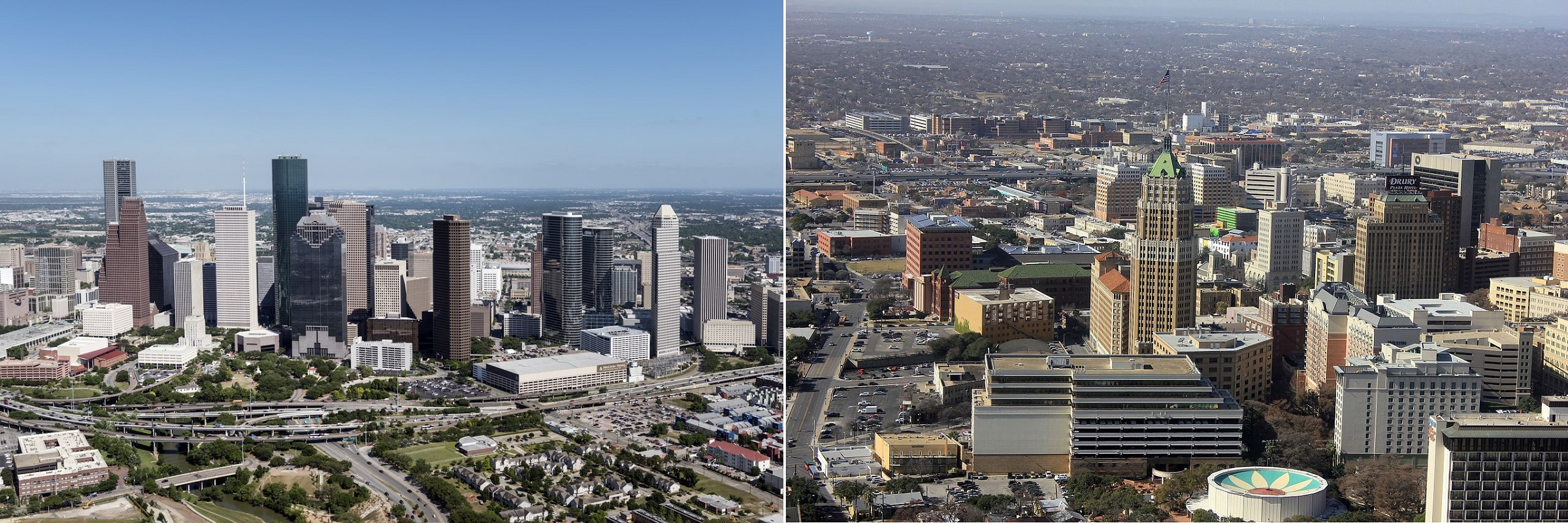Texas Tales: From Wild West to Modern Metropolis
One of the most recognizable states in America is Texas, sometimes known as the Lone Star State, because of its distinctive history, culture, and scenic beauty. Texas covers a huge geographical area, with the Gulf Coast in the southeast, the rocky mountains in the west, and rolling plains in the north. It is a big state known for its paradoxes and contrasts, where innovation flourishes against the backdrop of ageless landscapes and technology coexists with tradition.

Texas’s rich past, molded by centuries of colonization, conflict, and discovery, is at its core. It has long been a crossroads of civilizations, from the original native peoples who roamed the region to the Spanish conquistadors who first claimed it. The legendary Battle of the Alamo and the Texas Revolution, which finally resulted in it’s independence from Mexico in 1836, were the highlights of a new chapter in Texas history that was ushered in by the entrance of European settlers in the 18th and 19th centuries.

Relics from Texas’s legendary past may be found all over the state, from El Paso’s Spanish colonial architecture to San Antonio’s historic missions. In cities like Fort Worth, where cattle drives and rodeos honor It’s ranching past, the 19th-century cowboy culture is still thriving. Furthermore, the state’s continuous progress is reflected in the coexistence of contemporary skyscrapers and historic buildings in cities like Austin, the capital of Texas, and Houston, the state’s largest metropolis.

However, Texas’s appeal goes far beyond its past; it’s also a state rich in outdoor activities and natural beauty. The Panhandle’s immense plains, where wind turbines spin and cattle graze against a backdrop of boundless landscapes, stretch out beneath unending skies. Hiking, camping, and exploring abound in the untamed Hill Country to the west, which is filled with limestone cliffs, oak forests, and meandering rivers.
The Gulf Coast, located in the south, entices with its warm waters, sandy beaches, and abundant marine life. The Texas coast is a refuge for beachgoers, anglers, and lovers of water sports alike, from the vibrant port city of Galveston to the serene shores of South Padre Island. Offshore, the Gulf of Mexico’s diverse ecosystems sustain a booming fishing sector and offer vital habitat for migratory birds and other wildlife.

However, Texas’s national parks and preserves are arguably the places where its natural beauty is most striking. Big Bend National Park is an untamed wilderness of canyons, desert plains, and mountain peaks that is situated along the Rio Grande in West Texas. It provides unmatched chances for hiking, stargazing, and wildlife viewing. Stretching farther east, the piney woodlands of East Texas are a well-liked year-round outdoor recreation destination because they are home to vast forests, glistening lakes, and an abundance of animals.
Texas is a state that faces many difficulties despite its natural beauty and rich cultural legacy. Growing urbanization, environmental deterioration, and rapid population expansion pose an irreversible threat to the landscape, while problems like air pollution, water scarcity, and climate change are far off in the distance. To create a more sustainable future for future generations, Texans are utilizing their renowned spirit of resiliency and creativity in the face of these difficulties.

Summary
Texas is ultimately a state of mind rather than merely a geographical location. Here, everything seems conceivable, enormous ambitions are hatched, and history and culture blend together to create a vivid tapestry that unites the past and present. It’s a nation of possibility, where independence is highly valued and diligence is rewarded. Above all, it is a place of pride, patriotism, and limitless possibilities that will always have a particular place in the hearts of those who call it home.
